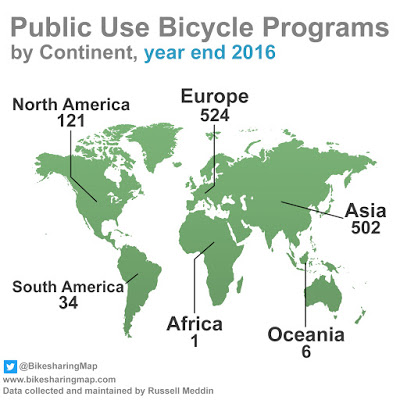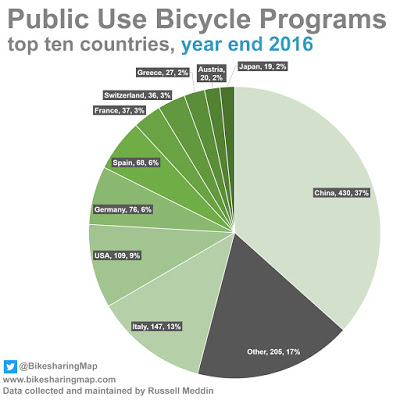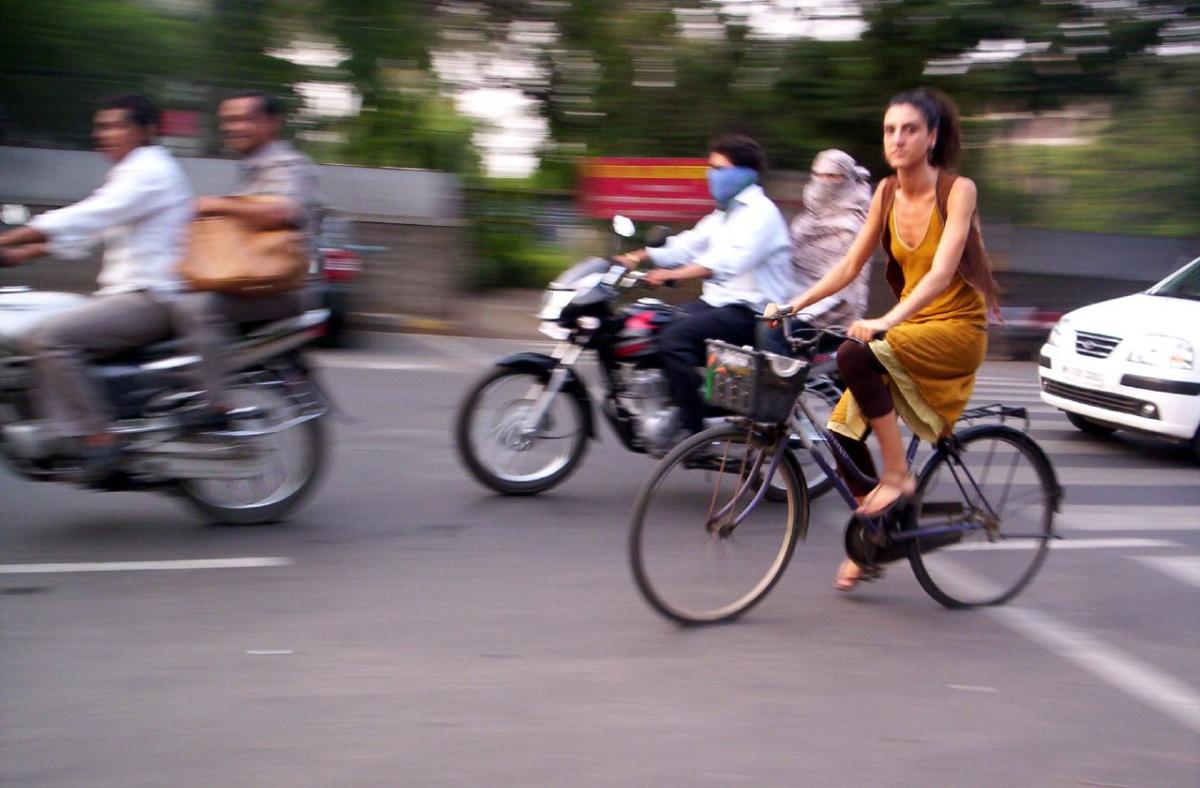
Policy Framework for Dockless Bike-sharing in India
Over the past decade, station-based bike sharing has been successfully introduced to many cities worldwide, encouraging more cycling and promoting more healthy and liveable cities. While the environmental benefits of docked bike sharing is clear, the high implementation and operation costs have deterred some cities from embracing these schemes that promote the benefits of active travel. The introduction of smart bikes allows for dockless operation, which involves lighter infrastructure at a lower cost. The cities around the world have witnessed the emergence of privately funded dockless bike sharing systems, operating without public licensing. This has a variety of implications for a city’s transport policy (Source: Unlicensed Dockless Bike Sharing – Common Position Paper).
It is estimated that there were around 2.3 million public use bikes available in the world in 2016, out of which 1.9 million (83%) were in China alone (Source: Bikesharingapp.com). However, the makret has completely changed in last 2 years after the emergence of new smart bike players. According to Ministry of Transport (MoT), People’s Republic of China, the country has around 70 bike-sharing brands, which have put more than 23 million bicycles on streets nationwide and attracted over 400 million users. The industry has created more than 390,000 jobs and generated revenue of $35 billion. It is also estimated that dockless bike-sharing in China has helped to relieve 400 million hours of time spent in traffic (Source: Report on the Social and Economic Influence of Shared-bicycles). Public use bikes play a positive role in meeting the public’s need for “last mile” transportation, lessening urban transportation pressure and establishing a low-carbon transport network, according to the guideline.
Bike Sharing Market in India
The bicycle market in India is worth $1.2 billion, and production currently stands at 15 million units. To date, bicycles remain the most important mode of transport in rural India. However, there were not many public bike sharing programes in India, owing to higher capital cost required to setup stations and lower return on investment. Bike-sharing seems to be the new ‘in’ thing in India as dockless bikes, smart bikes, and bike sharing has started seeing traction. A ‘Dockless’ commute refers to providing transportation from Point A to Point B without human intervention. It gives people the option of picking up a vehicle within 100 metres of a bus, metro, or train station, or at a given location (Source: YourStory).
It is early days to say if dockless bike-sharing system in India will also grow like in China and other part of the world and is contingent on our cities facilitating investment in the space and providing infrastructure for such services to operate. Some of the smart cities projects have allocated funding for the creation of physical infrastructure and to support private initiative and we believe it is the best way forward without risking public funds and with the promise of creation of infrastructure for sharing and personal bicycles, alike. The market has witnessed the entry of many private players, who require more policy action, supporting infrastructure and enabling environment than the funding. Some of the key players in public bike-sharing are:
| Company | City | No. of bikes | System | Funding |
 | Bengaluru, Delhi, Chennai, Pune, Ahmedabad, Coimbatore and Indore | >10,000 bikes | Dockless | Closed |
| Delhi, Gurgaon, Noida, Faridabad, Chandigarh | 5,000 bikes | Dockless | $10 million | |
 | Bangalore, Chennai, Pune, Mumbai and Kolkata | 2,000 bikes | Dockless | Backed by ZoomCar |
 | Bengaluru | 10,000 bikes | Dockless | $20 million |
 | Kanpur and Madras | 500 bikes | Dockless | Closed |
 | Ahmedabad | >100 bikes | Dockless | – |
 | Gurugaon | N.A. | Dockless | Closed |
 | Bhopal | Surat (1200 bikes, 65 stations) Bhopal (500 bikes, 88 stations) Ranchi (1200 bikes, 120 stations) Kolkata (400 ebikes, 100 bikes, 22 stations) | Docking | — |
 | Mysore | 40bikes (48 Stations) | Docking | — |
 | Delhi, Jaipur, Ajmer | 100 bikes(20 Stations) | Docking | – |
Guidelines for Bike-sharing in India
Countries like China and Singapore have released guidelines for dockless bike-sharing schemes in the two countries. In China, the national guidelines for bike-sharing were issued by Ministry of Transport (MOT) and nine other government departments in August 2017. The guidelines requesting local governments to regulate bicycle and traffic standards and to punish individuals who park the bicycles outside of permitted areas or vandalize the bikes. Shanghai and Tianjin had announced their own regulations in July, mandating a service life of three years for bikes and requiring companies to hire at least one maintenance employee for every 200 bicycles. Around 30 cities have passed regulations to guide bike-sharing’s production, operation and maintenance, adhering to the national guidelines.
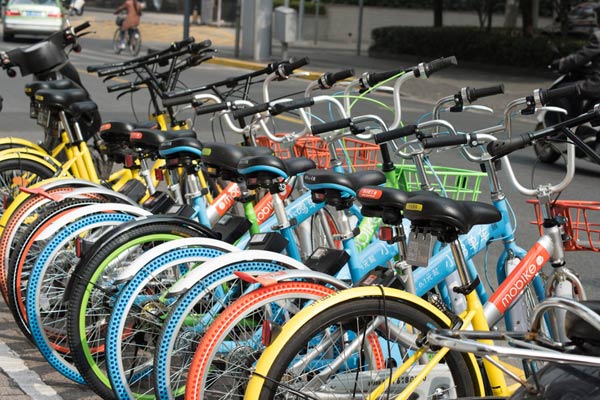
In Singapore, Land Transport Authority (LTA) signed MoU (Memorandum of Understanding) with 5 operators – obike, ofo, Mobike, Gbikes and SG Bike. To ensure designated parking places, LTA proposed to designate more than 4,000 yellow boxes for the parking of 20,000 bicycles.
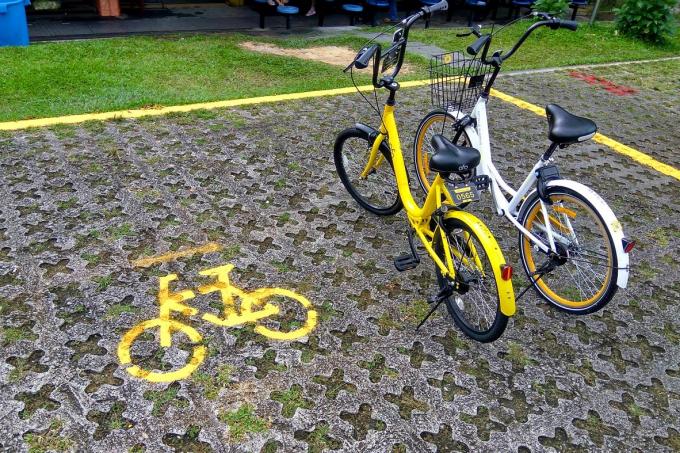
Some of the key regulations include:
 China |  Singapore |
| The operators are required: – To register the users of bike-sharing services under their real names – To not provide or offer services to Children under the age of 12 and are not encouraged to offer electric bike services – To set up electronic fences to guide users to park in an orderly manner – To strengthen vehicle scheduling, parking and maintenance management to ensure vehicle safety and ease of use – To Innovate the insurance mechanism to purchase personal accidental injury insurance and third party liability insurance for users | The operators are required: – To remove indiscriminately parked bicycles within a half day and faulty bicycles within a day. – To adopt geo-fencing technology to track whether their bicycles have been parked within designated parking zones and take measures to prevent indiscriminate parking. – To purchase public liability insurance for the users and victims of accidents caused by users – To educate users on proper parking and safe riding behvaiours – To share anonymised trip data with LTA to facilitate the planning of “active mobility infrastructure” |
Bike share systems work best when they are part of a city’s overall transport network and vision. These systems should help cities to meet the mobility, sustainability, equity, and economic challenges of the future. Cities should ensure that any system they allow to operate within their boundaries can be the partner(s) they need to help meet their goals and it is a shared responsibility of the city and partner(s) to work towards some identified common goals. Currently, there is no national guideline on the rollout of bike-sharing in Indian cities. Government of India should create a guideline to promote this initiative and give incentives to users to use bicycles. It can follow the example of China, where 10 ministries came together to create a national guideline.
Moreover, we should also understand that the bicycle sharing industry in China and Singapore has seen at least 2 years of maturity for them to now regulate on test basis. One key objective for the ecosystem should be to first promote the growth of bicycle sharing in India to comparable numbers of that of China or Singapore, while regulation should be only in cases of serious violations and not as an impediment to this emerging megatrend that has reached India with a lag.
UITP, in partnership with the European Cyclists’ Federation (ECF) and European Bike Sharing and Systems (PEBSS), has prepared guidelines for framing regulation for dockless bike-sharing system:
I. Registration / Licensing / Regulations: Cities/Public Authorities must give green lights to shared bicycle operators working across their urban / suburban territory (ies)
II. Orderly streets: Cities should develop a policy to encourage more bicycle use, and provide more bicycle parking areas and safe cycling infrastructure
III. Riding (rolling) stock: The bicycle equipment must be of sufficient quality, built to withstand the rigours of constant public use and exposure to the elements, meeting rider safety and comfort standards
IV. Servicing / Mechanical integrity: Prospective operators should demonstrate a robust system for ensuring that the bikes are kept in working order proactively
V. Awareness programs: The city authorities should conduct user education programs to advocate responsible usage.
Additionally, in a mature stage market, further details can be sought on:
VI. Re-balancing: Prospective operators must demonstrate a proactive and efficient re-balancing strategy; on-bike location technologies are essential to such a strategy
VII. Cooperation: Upfront, extensive coordination with local authorities for transport planning purposes, and cooperation with other stakeholders to ensure complementarity with public transport is essential to the success of bike sharing operations
VIII. Ensure exchange of data: Public authorities should be able to access bike share data such as bike usage so that the city can better calibrate its urban mobility strategy and infrastructure
IX. Operator’s ability to establish, perform and terminate operation: Prior to granting permission to launch, cities should consider asking the operators to submit a plan for start-up, operation and possible termination of operation
Public bikes are part of the green urban transport system, and city governments should optimize bike transportation networks to improve convenience and safety for riders.

